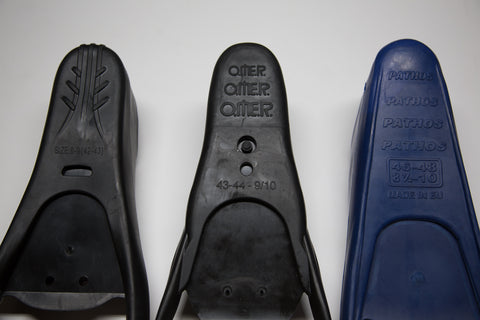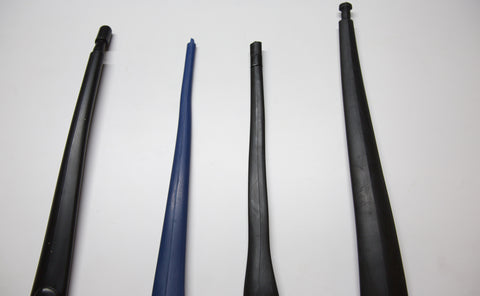Footpocket Weight Comparison
We get a lot of questions from customers asking us about the various footpockets that are available and if they will fit our Moana blades. So we are going to do a few articles about the various foot pockets that we are offering to help customers understand the differences. This article is going to cover one of the most frequently discussed topics: weight.
We decided to grab the pockets we had in stock and compare them all in a size 9. Most foot pockets cover a range of sizes, such as 9-10 or 8-9. So we grabbed each style of pocket with a 9 in the size which should be acurate enough for this camparison. The pockets we looked at are:
Pathos Fireblade 8-1/2 - 10 (46-48)
Salvimar Step(same as Neptonics, Hammerhead, Riffe) 8-9(42-43)
C4 300
OMER Stingray 9-10(43-44)
OMER Stingray Short 9-10(43-44)
The first thing you will notice is that the sizing is all over the place. The US men's sizes don't really match up to the European sizes shown on the blades. The bottom line is that some run small and some run large. We will be posting more on that in a subsequent article.

(Bottoms. From left to right: Salvimar, OMER Stingray Short, Pathos)

(Tendons. From left to right: Salvimar, Pathos, OMER Stingray Short, Omer Stingray)
The MOANA hybrid blade gets its name from its design. The tip of the blade is soft and the base is stiff. This allows for a lighter kick while freediving but also gives you some backbone when you need it, such as fighting a fish or swimming in harsh conditions. This stiffer base allows for a smaller and lighter tendon. One pocket that stands out to us (and has proven to be very nice in the water) is the little-known OMER Stingray "Short". This foot pocket has the same "shoe" as its big brother the Stingray but it has shorter and thinner tendons. Much thinner! And much lighter! This pocket actually won as the lightest rubber pocket of the group (the C4 300 was by far the lightest but it isn't rubber, it is a stiffer plastic). And the Stingray is widely known as a comfortable foot pocket. Right now this is one of my favorite pockets to pair with the Moana blades.
The Pathos pockets are only slightly heavier (less than 10 grams more which is only about a 2% increase). But don't let it's light weight fool you, the Pathos foot pocket is very stout. It actually features a stiff sole and tendons with softer uppers. This stiffness provides more efficient power transfer from the foot to the blade. The downside, and we think its a major downside, is that the foot pocket must be permanently glued to the fin blade. If you need to remove the foot pocket is must be cut off. If done carefully the blade can be reused, but the foot pocket is almost always destroyed at that point.




(The four above photos show how much smaller the "short" tendons are compared to the regular stingray tendons)
To weight these various products we used out mixing scale. It is precise to 00.1 grams which is far more precision than is required for this review.





(All weights above shown in Grams. From top to bottom: Stingray, Stingray Short, Pathos Fireblade, Salvimar style, C4 300)
STYLE
WEIGHT(g)
OMER Stingray
656.2
OMER Stingray short
514.1
Pathos Fireblade
524
Salvimar style(Neptonics, Hammerhead, Riffe, etc)
620.6
C4 300
322.2





